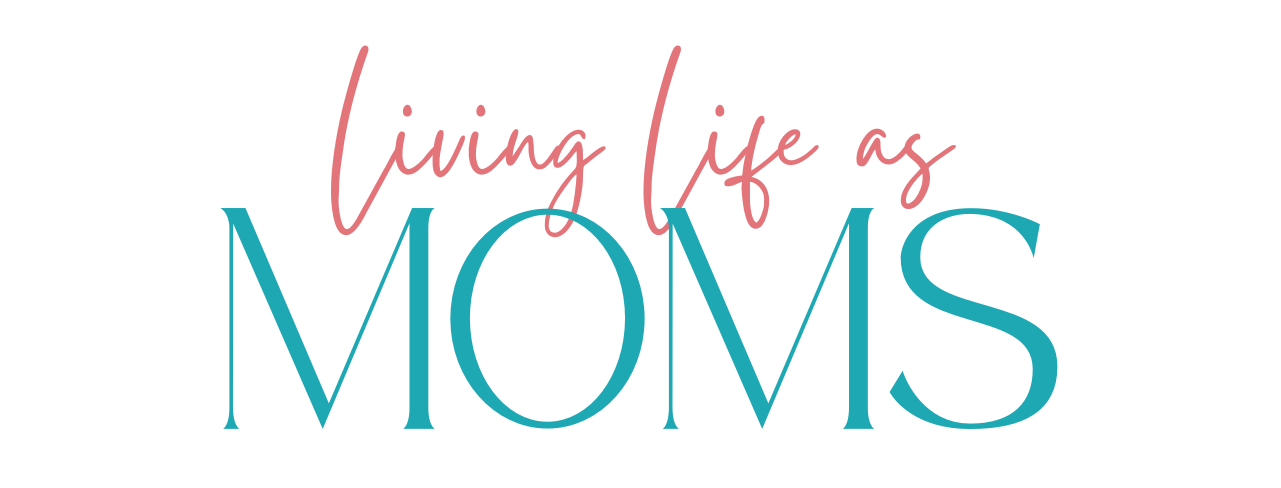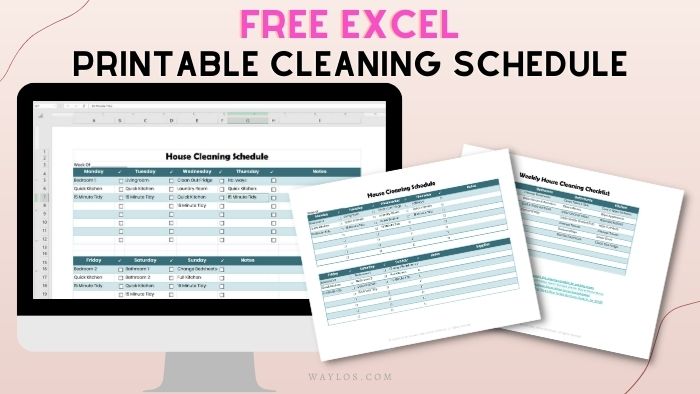How To Finally Organize Your Home Finances

We all know we have to “be financially responsible,” but what does that even mean? Of course we want to have complete and total control over our finances, but sometimes it’s hard to know where to start.
There are so many moving parts to having a healthy financial system, and it’s far easier to ignore the mess. The problem with this is that we end up scrambling to clean up the inevitable financial problems that come along, instead of being prepared with the tools to minimize their effects on our lives.
You’re about to learn how to easily organize your finances at home, and keep up a healthy relationship with your money this year.
We’re going over seven action steps to wrangle the mess and get you on the path to managing your money the right way.
I am THE BIGGEST organizing fan there is. Organizing your finances is like organizing your closet – it’s going to reduce clutter, reduce the number of times you have to think about it, and reduce your stress most of all.
Let’s do this!
[/et_pb_text][/et_pb_column][/et_pb_row][et_pb_row column_structure=”1_4,1_2,1_4″ _builder_version=”4.5.0″ _module_preset=”default”][et_pb_column type=”1_4″ _builder_version=”4.5.0″ _module_preset=”default”][/et_pb_column][et_pb_column type=”1_2″ _builder_version=”4.5.0″ _module_preset=”default”][et_pb_image src=”https://livinglifeasmoms.com/wp-content/uploads/2020/07/Organize-Your-Financial-House-min.jpg” alt=”Person Organizing Finances at Home” title_text=”Organize Your Financial House-min” _builder_version=”4.5.0″ _module_preset=”default”][/et_pb_image][/et_pb_column][et_pb_column type=”1_4″ _builder_version=”4.5.0″ _module_preset=”default”][/et_pb_column][/et_pb_row][et_pb_row _builder_version=”4.5.0″ _module_preset=”default”][et_pb_column type=”4_4″ _builder_version=”4.5.0″ _module_preset=”default”][et_pb_text _builder_version=”4.5.0″ text_font=”Georgia||||||||” text_text_color=”#000000″ text_font_size=”19px” text_line_height=”1.6em” link_font_size=”19px” link_line_height=”1.6em” ul_font_size=”19px” ul_line_height=”1.5em” ol_font_size=”19px” ol_line_height=”1.6em” quote_font_size=”19px” quote_line_height=”1.6em” header_font=”Georgia||||||||” header_2_font=”Georgia||||||||” header_2_text_color=”#cc1c9a” header_2_font_size=”28px” header_2_line_height=”1.6em” header_3_font=”Georgia||||||||” header_3_text_color=”#cc1c9a” header_3_line_height=”1.6em” hover_enabled=”0″]
1. Every Bill and Financial Document Needs to Have a Place.
Sometimes I feel like all I get are bills. They used to end up in a pile on my kitchen counter, or on my desk. Not only was it gross to look at, but I was constantly terrified I’d missed some random payment.
Now, I have each category of bills, and other financial documents, in their own folder in my desk. I can easily access anything I need, nothing gets lost, and it’s much simpler to keep track of due dates.
At the end of the year, I can easily transfer them to a box for storage (or enjoy a very satisfying shred session).
Action Plan #1:
All of those papers need a filing system. Whether you go paperless, or are still getting bills in the mail, your filing system should include a folder for:
- Each checking or savings account
- Each investment account
- Each set of bills: Credit cards, Home expenses (rent/mortgage, utilities, phone, etc.) and Miscellaneous personal expenses
- Tax Documents (Mortgage and Student Loan Year-End Statement, W-2 or 1099, tax returns, charitable donation receipts, etc.)
I love these file folders from Zazzle, and they’re always having random coupon code sales, if you want to check them out!
TIP: If you are team “paperless,” but don’t want to download each statement into a file, you can create email subfolders to make retrieving specific documents super-easy.
If you want to learn more about controlling paper clutter in your home, check out my post here.
2. Budget, Budget, Budget.
The dreaded “B” word…. Sorry ladies, nobody gets a pass.
I personally used to hate budgeting, until I took some time to understand what it’s actually for. Basically, budgeting is the difference between telling your money where to go, and being stressed out wondering where the hell it all went.
A decent budget doesn’t have to be hard or terribly time-consuming. It only has to show your money coming in (income), and your money going out (fixed and variable expenses). You need to know what you are spending on, and a budget will show you.
The truth is, money is like water. If we don’t regularly look for holes, it leaks out of our wallets, and we can never get it back.
Action Plan #2:
The first (and most annoying) thing to do is to round up your expenses and spending for at least the last three months, to calculate your average monthly spending in each spending category.
I have a this set of free budget printables to start you off on the right foot.
If you don’t want to spend hours scouring through paperwork, the fastest way to get an estimate of your expenses is with an app like Mint or Personal Capital. Both apps are totally free. You can sync all of your checking, savings and investment accounts to see one big financial snapshot. It’s probably the easiest way to go if you want to get started ASAP.
Now that you know your average monthly spending habits, you can consider cutting back on the office lunches, increasing retirement savings, throwing more money toward debt, or paying for your next vacation in cash.
3. Always Pay Yourself First.
Lots of people think that “pay yourself first” only applies to business owners. I actually thought this too!
Here’s what “pay yourself first” really means: The second each paycheck clears in your account, you automatically take out a percentage to SAVE. That’s it! You are giving 5-15% of your take-home pay to YOU, right off the top, before paying anything else.
Why do this? You’re telling yourself that YOU MATTER. You, and your future, matter to you. They matter more than whatever dumb thing you were probably going to buy with that relatively small amount of money.
Action Plan #3:
The easiest way to do this is to set up an automatic transfer into a savings account.
If you are totally new to saving, start with 3% or 5%, and increase that amount after a few weeks, once you feel like you can save a little more.
Right now it may not be as easy to save, I know it isn’t for me. But, every little bit counts. Make sure to go through your credit card and bank statements, and cancel or suspend any unneeded subscriptions or memberships. That will help put more money into the pot.
4. Keep All Of Your Financial Passwords (safely) in One Place
No one likes to talk about this, but in the event of an emergency or medical issue, your family is going to need to be able to take care of paying the bills while you are not able to.
Since I take care of all of the online bill-paying in the house, no one else would even know where to look for account info unless I tell them.
Action Plan #4:
Download a trusted password-protecting app like Keeper (they have a free version), or keep a running list of all account Usernames and Passwords in an inconspicuous place.
Make sure your significant other, trusted sibling or friend knows where it is, in the event of an emergency.
If you would rather not keep your passwords on a computer, check out my Premium Budget Binder, it’s got space to store all of your account information (pages 15 & 16).
5. Keep a Running List of Any Debt, by Interest Rate
You’re definitely (hopefully) making at least the minimum monthly payments on all of your debt. But did you know that some of your accounts are more expensive than others? Depending on the company, your loan or credit card interest rates (APY) could be close to zero, or hovering around 30 percent!
You may be “doing the right thing” by making your monthly payments, but you may be totally in the dark about how much interest is being tacked on every month, increasing your debt and slowing you down from paying it off.
Action Plan #5:
Grab your debt statements and a piece of paper. Simply list each debt, in order of highest interest rate to lowest.
You can include:
- Company name
- Type of debt (credit card, student loan,personal loan, etc)
- Total amount due
- Interest Rate Percentage
- Date of the month this bill is usually due
Now you know the debts that are costing you the most money to carry. Consider aggressively paying off the debts with the highest interest rates first, while paying a little bit more than the minimum monthly payments on each of the rest.
And of course, getting into the habit of paying your credit cards in full every month is the best way to keep your interest rate at ZERO. Do you really want to continue paying credit card companies up to hundreds of dollars every month in interest? You have way better places to put that money.
6. Get On The Automatic Payments Train
Why have to waste time and brain power pulling out your wallet, check book and computer several times a month, when you can set it and forget it?
Putting your bills and savings on autopilot is the easiest way to guarantee you won’t miss a payment and incur late fees.
In this day and age, where nearly everything can be automated, it’s silly not to have at least your fixed bills paid automatically. I’m talking about rent/mortgage, utilities, phone, insurance…Baseline bills that 100% need to be paid.
Action Plan #6:
Most bank accounts have the option to schedule bill payments online automatically. If your bank doesn’t, the companies you are paying will most likely give you that option. You’ll be able to schedule the auto-pays online or by phone.
Don’t forget to “auto-pay yourself” first, and automatically transfer some cash into your savings account!
7. Financially Responsible Moving Forward: Monthly Financial Check-In Dates
How many times have you started a new habit with the best of intentions, only to forget about it a few weeks later? Finances especially is a long, slow game. It’s very easy to fall off track, since the gains can be incremental.
Keeping yourself informed about your progress is going to keep you motivated to continue your financial journey on a positiva path, and give you a minute to high-five yourself, you’re doing amazing and you deserve it!
Action Plan #7:
Here’s where “being financially responsible” really kicks in. You’ve got to put it in your calendar! It’s only 12 times out of the whole year.
Ask yourself these questions:
- Am I following my Budget? Why or why not?
- Did I pay myself first with every paycheck?
- Have I paid all of my bills on time this month? Why or why not?
- Do I need to try a new budgeting method?
- Do I have a big expense coming up (wedding, holidays, vacation, etc) that I should set aside money for?
Tweak your budget based on any new items that have come up.
Remember, there are TONS of budgeting systems out there. If you are using one that isn’t working out for you, try out another. Just don’t give up!
Conclusion
It’s important to have some level of organization in all areas of your life, and finances are no exception. Once you get the hang of it, you’ll see that all it takes is a little maintenance only 12 times a year, to keep your money working for you.
I hope you stick with your new Financial Organization action plan. Having a financially responsible home doesn’t have to be hard. I’m rooting for you!
XO,
-Mina
[/et_pb_text][/et_pb_column][/et_pb_row][et_pb_row _builder_version=”3.25″ custom_padding=”27px|0px|0|0px|false|false”][et_pb_column type=”4_4″ _builder_version=”3.25″ custom_padding=”|||” custom_padding__hover=”|||”][et_pb_text _builder_version=”4.5.0″ text_font=”Georgia||||||||” text_text_color=”#000000″ text_font_size=”19px” text_line_height=”1.6em” ul_font=”||||||||” ul_line_height=”1.6em” header_font=”Georgia||||||||” header_2_font=”Georgia||||||||” header_3_font=”Georgia||||||||” hover_enabled=”0″]If you liked this post, make sure to leave a comment & Pin it!!!
Checkout my other Blog Posts & be sure to follow me on Pinterest, I have TONS more great content!!
Here are some more posts that might be helpful:
[/et_pb_text][/et_pb_column][/et_pb_row][/et_pb_section]


